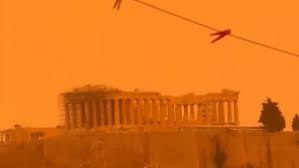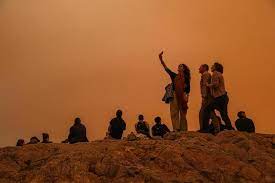Greece suffers new round of Saharan dust pollution

Athens: Clouds of dust blown in from the Sahara desert covered Athens and other Greek cities on April 23, one of the worst such episodes to hit the country since 2018, officials said.
A yellow-orange haze smothered several regions after several days of strong winds from the south, limiting visibility and prompting warnings from the authorities of breathing risks.
“It’s one of the most serious episodes of dust and sand concentrations from the Sahara since March 21-22, 2018, when the clouds invaded the island of Crete in particular,” said Mr Kostas Lagouvardos, weather research director at the Athens Observatory.
Greece had already been struck by Sahara dust clouds in late March and early April that also smothered parts of Switzerland and southern France.

Authorities warn that the dust concentrations can reduce sunlight and visibility while increasing concentrations of fine pollution particles, posing risks for people with underlying health problems.
The Sahara desert releases 60 to 200 million tonnes of mineral dust per year. While the largest particles come rapidly back down to earth, the smallest can travel thousands of kilometres, potentially reaching all of Europe.
The Greek weather service said the skies would begin to clear on April 24.





